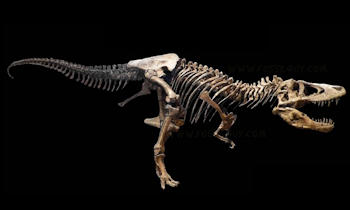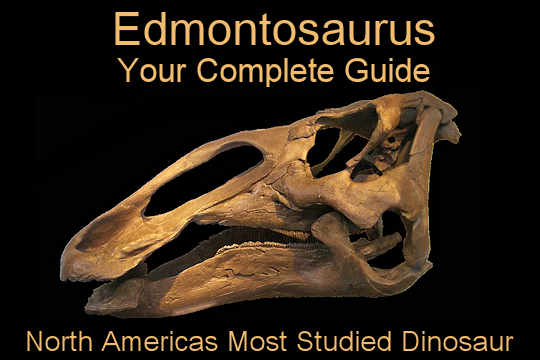Paleontology News
Paleontologists make a surprising discovery! Large trackways made by bipedal relatives of Crocodiles from the Cretaceous of South Korea.
Crocodiles today are just a tiny branch of the Crocodylomorph family tree. In the past, the diversity of crocodile like animals was immense.
There were crocodiles that lived in the open ocean, heavily armored armadillo like crocodiles, crocodiles with large tusks like a boar, forest dwelling crocs that could run down early horses, and now, new research has found bipedal crocodiles!
These bipedal crocodiles don't come from fossil bones, but instead enigmatic trackways from South Korea. Paleontologists had a tough time figuring out what caused these tracks. It was thought Pterosaurs may have caused them, but by studying additional trackways, they were surprised when they realized they were made by bipedal crocodiles!
Check out the news release below.
Summary Points
Hundreds of these tracks were discovered near Sacheon City, South Korea. In the Cretaceous, these animals would have been walking along the muddy shores of numerous lakes.
Similar trackways nearby were originally thought to be that of Pterosaurs (Learn About Pterosaurs Here), however, this research shows the original tracks and the new ones were made by large bipedal crocodile relatives.
The paleontologists looked for evidence of hand marks, but found no signs of them. They also ruled out hand overprinting and poor track preservation.
These roughly 10 foot long bipedal crocodiles are a new species called Batrachopus grandis.
Ancient crocodiles walked on two legs like dinosaurs
University of Queensland - News Release - June 11, 2020

A reconstruction of the ancient landscape of South Korea with crocodile track-makers. Credit: Dr Anthony Romilio.
An international research team has been stunned to discover that some species of ancient crocodiles walked on their two hind legs like dinosaurs and measured over three metres in length.
University of Queensland palaeontologist Dr Anthony Romilio said the researchers first thought the similar-shaped fossilised footprints were from another ancient animal known as the pterosaurs.
"At one site, the footprints were initially thought to be made by a giant bipedal pterosaur walking on the mudflat, we now understand that these were bipedal crocodile prints," Dr Romilio said.
"The footprints measure around 24 centimetres, suggesting the track-makers had legs about the same height as human adult legs.
"These were long animals that we estimate were over three metres in length.
"And while footprints were everywhere on the site, there were no handprints."
The research team, led by Professor Kyung Soo Kim from Chinju National University of Education, soon found clues as to why there were no handprints.
"Typical crocodiles walk in a squat stance and create trackways that are wide," Professor Kim said.
"Oddly, our trackways are very narrow looking – more like a crocodile balancing on a tight-rope.
"When combined with the lack of any tail-drag marks, it became clear that these creatures were moving bipedally.
"They were moving in the same way as many dinosaurs, but the footprints were not made by dinosaurs.
"Dinosaurs and their bird descendants walk on their toes. Crocodiles walk on the flat of their feet leaving clear heel impressions, like humans do."
The footprints dated between 110–120 million years ago and were discovered after analysing animal track sites in what is now known as South Korea.
Researchers initially questioned the absence of hand impressions from the trackways, given that today’s typical crocodiles are ‘four-legged’ or quadrupedal.
"Fossil crocodile tracks are quite rare in Asia, so finding an abundance of nearly one hundred footprints was extraordinary," Dr Romilio said.
"As an animal walks, the hind feet have the potential of stepping into the impression made by the hand and ‘over-printing’ it, but we find no evidence of this at these Korean sites.
"It isn’t due to poor preservation either, because these fossils are spectacular, they even have the fine details of the toe-pads and scales on their soles preserved."

Figure 4 showing detailed views of some of the tracks, including skin impressions left by the feet. From the research: Kim et al, 2020
News Release Provided by: The University of Queensland
The Full Journal Article is Available Here:
Kyung Soo Kim, Martin G. Lockley, Jong Deock Lim, Seul Mi Bae, Anthony Romilio. Trackway evidence for large bipedal crocodylomorphs from the Cretaceous of Korea. Scientific Reports, 10, 8680 (2020) DOI: 10.1038/s41598-020-66008-7.
Recommended Dinosaur Book:
The Rise and Fall of the Dinosaurs: A New History of a Lost World
Steve Brusatte, 2018
This new dinosaur book is light hearted and easy to read. The author, a renowned Paleontologist, does a great job at enggaging the reader and has it packed with details without being overwheelming. Check out the reviews, it's a great dinosaur book!
Browse More Paleontology News

High quality Dinosaur teeth by Fossilera










